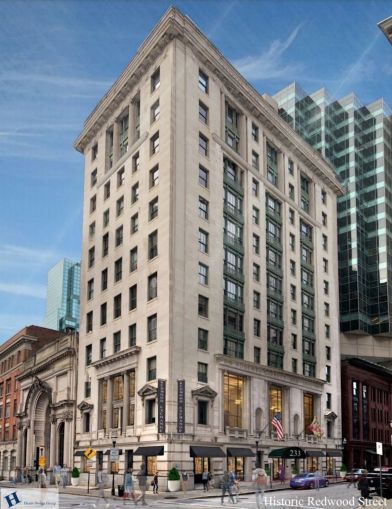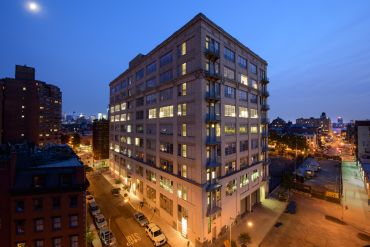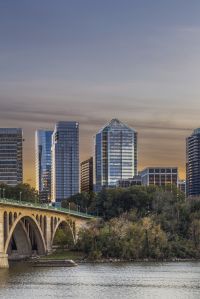Historic Baltimore Buildings Ink 21 Leases
By Keith Loria August 2, 2021 2:18 pm
reprints
In October, investment company Byrnes & Associates was part of an investment group that acquired the former Garrett Building, a two-building historic property in Baltimore’s central business district, with plans to renovate and reposition the upper floors of one of the buildings into multi-tenant office space.
Located at 225 and 233 E. Redwood Street, the four-story building and adjacent 13-story building — now named Vickers Exchange and Redwood Exchange — combine for nearly 90,000 square feet of office and retail space, with the ground floors being retrofitted for restaurant and retail users.
At the time of the purchase, which public records list at a $1.75 million acquisition cost, the property had very little occupancy. But, thanks to 21 leases signed over the past nine months, the buildings now have 25 percent occupancy, with momentum increasing weekly.
In that time, the owners have signed eight multi-year leases for spaces ranging from 1,600 to 5,000 square feet each and 13 one-year leases for private offices.
Among the new tenants are Engenium Group, an engineering consulting firm expanding from Washington, D.C.; Baltimore Witness, a nonprofit crime data group; and Ignition72, a tech firm relocating from the Mill Centre in Hampden, Md.
Brad Byrnes, principal of Byrnes & Associates, spoke with Commercial Observer about the strategy that enabled this strong activity.
Commercial Observer: You’ve completed 21 leases in the past eight months. What has been the key to success with getting these spaces occupied?
Brad Byrnes: A tremendous amount of collaboration with Downtown Partnership of Baltimore, Baltimore City, and City Center Residents Association. There’s no substitute for hard work. I’ve been in the office six days a week for a majority of the past eight months.
What is the appeal of the property to tenants?
The building was completed in 1913 by the Garrett family, who also owned the Baltimore and Ohio Railroad. It is magnificent, and it’s registered on the [National Register of Historic Places]. The 21 new companies share an entrepreneurial spirit and a strong belief in the long-term prospects of Downtown Baltimore.
What sort of renovations have you made since buying the buildings?
Mostly cosmetic — paint, carpet, new LED lighting, touchless restroom features, new HVACs/filters.
How has what you accomplished so far fit in with your strategy upon acquiring the building?
We believe we have the best product for the best price in Baltimore. The private offices with free Wi-Fi, kitchen access, conference room access up to 5,000 square feet, and office space was strong pre-COVID and has continued to be a leader coming out of COVID.
Why is the property’s location attracting tenants?
Cities have been the epicenter for commerce throughout history and that continues to be the case. Companies must have a presence where young talent lives close by. As employees slowly migrate back to the workplace, they are seeking a collaborative workplace in which they can interact with their colleagues and areas emitting energy, social interaction and an after-work atmosphere.
We see tremendous signs of progress downtown and the shifting of attitudes as the region emerges from the pandemic, and we remain extremely optimistic about the large-scale return to urban life. A strong and vibrant downtown core is essential for the long-term economic health of the entire region.
Keith Loria can be reached at kloria@commercialobserver.com.


